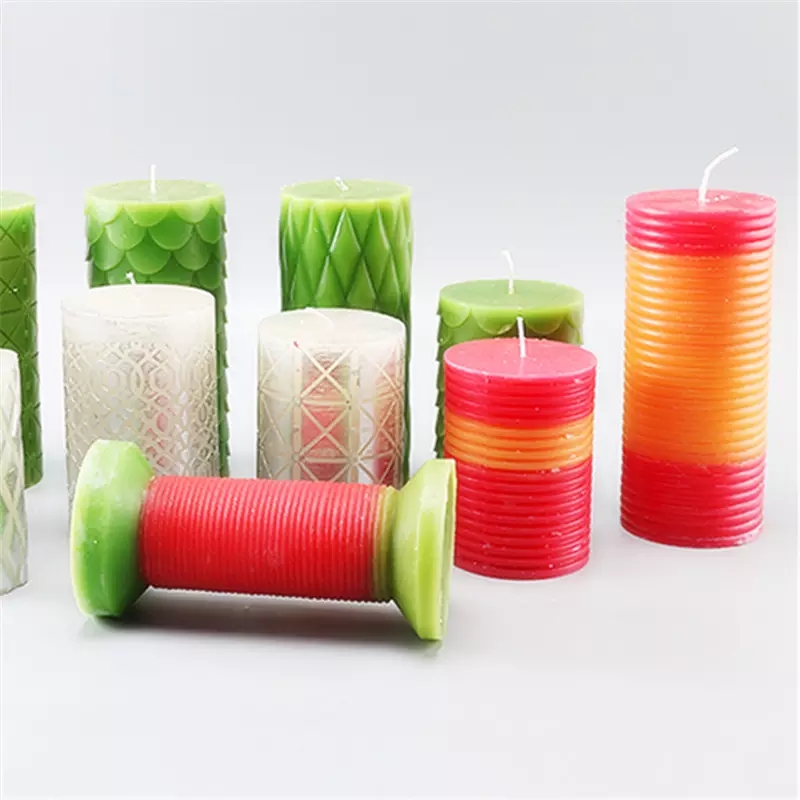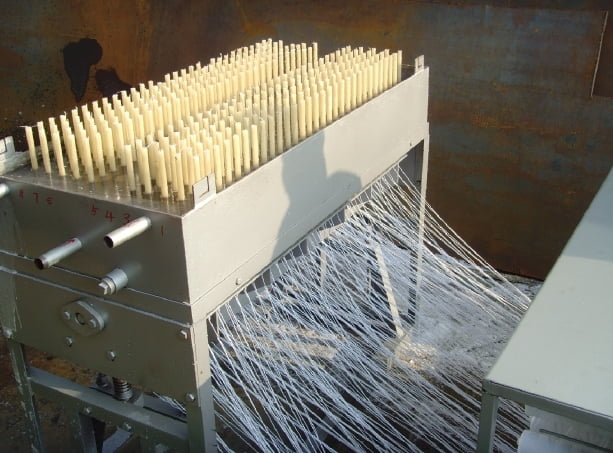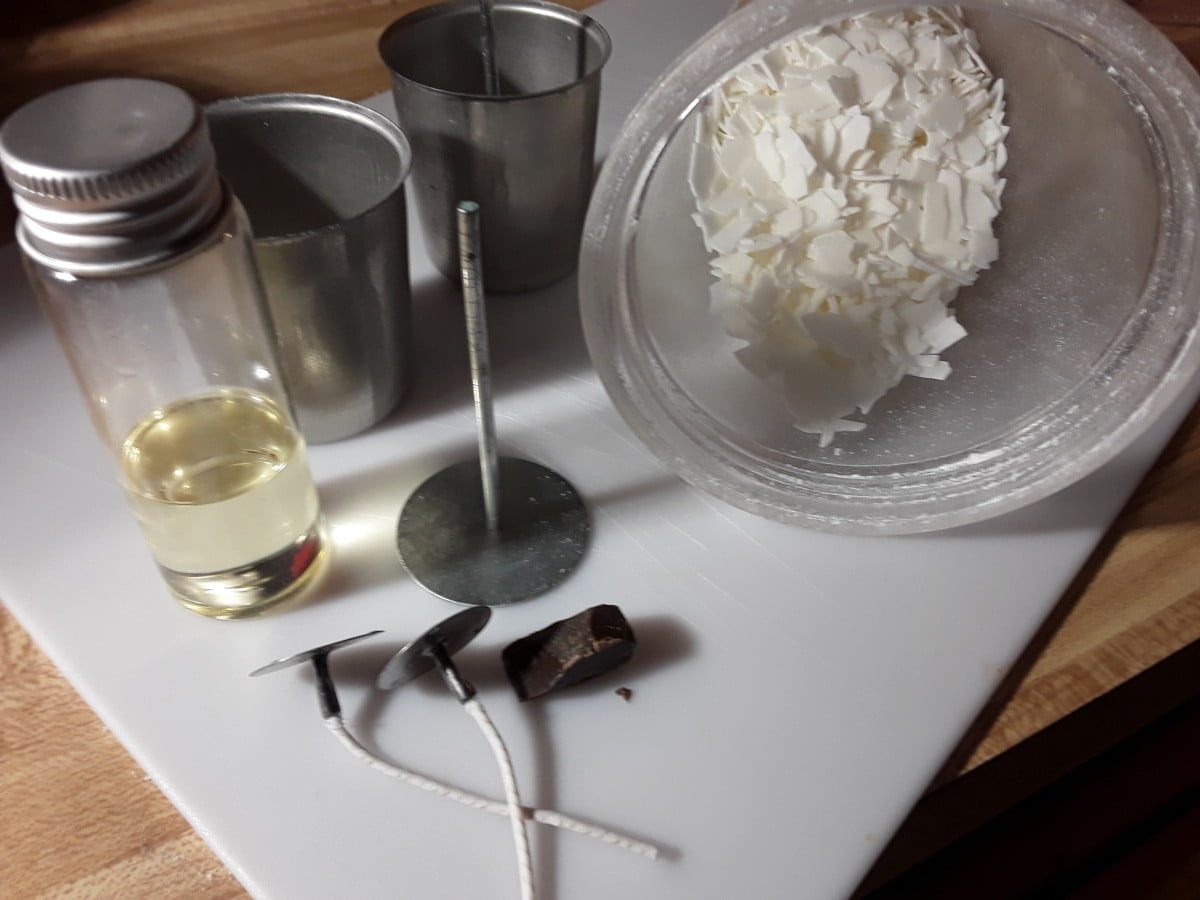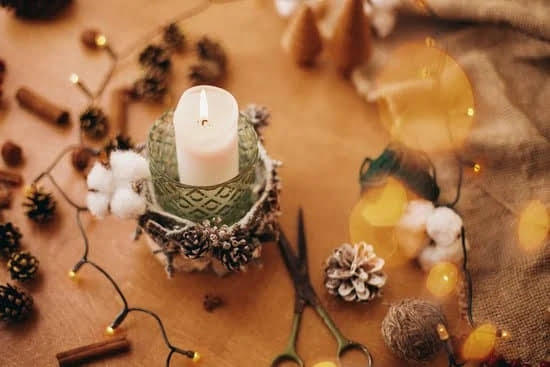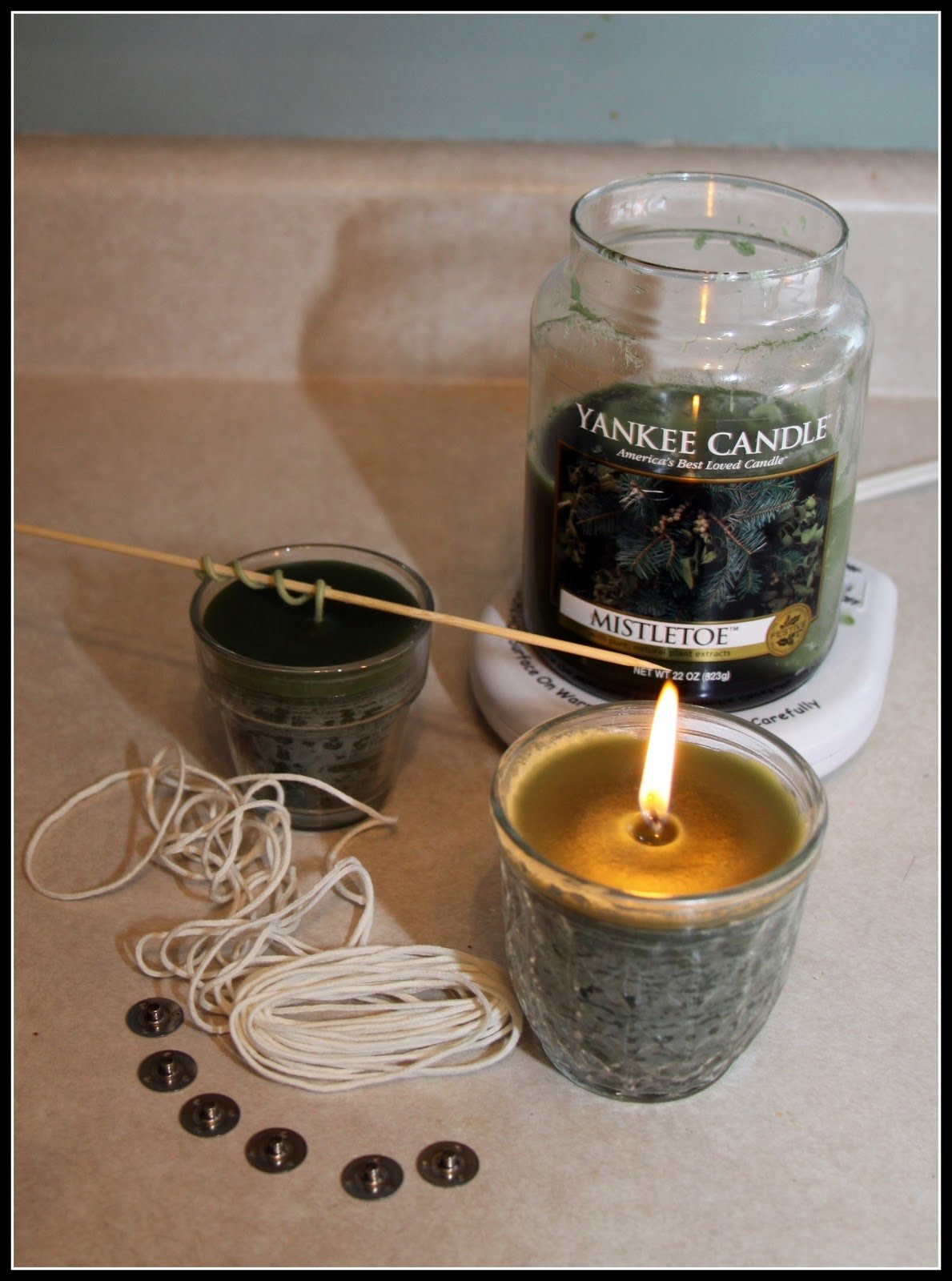Are you looking for a creative and therapeutic hobby? Consider taking a natural candle making course. In this section, we will explore the art and science behind natural candle making, including the history, benefits, and essential oils used in the process. Whether you’re a beginner or experienced crafter, there is always something new to learn in the world of candle making.
Candle making has been practiced for centuries, with the earliest known candles made from tallow or beeswax. Today, natural candle making has gained popularity due to its health and environmental benefits. In this article, we will delve into the history and benefits of natural candle making, as well as how essential oils and aromatherapy can enhance your candle-making experience.
Choosing the right wax and wicks are crucial in natural candle making. We’ll discuss the various options available and provide guidance on selecting the best materials for your candles.
Additionally, we will provide a step-by-step guide to creating your own natural candles at home, along with safety precautions and best practices to ensure a successful and enjoyable crafting experience. If you’re interested in learning more about natural candle making courses and how to get started, keep reading.
History and Benefits of Natural Candle Making
Natural candle making has a rich history that dates back centuries, with the earliest known candles being made from whale fat in China around 200 BC. In ancient times, candles were primarily used for illumination, but over the years, their purpose has evolved to include religious ceremonies, aromatherapy, and home décor. The benefits of natural candle making extend beyond just providing light and fragrance; they also offer therapeutic and health benefits.
Therapeutic Benefits
The use of essential oils in natural candle making not only adds a pleasant aroma to the space but also provides therapeutic benefits. Certain essential oils have been found to promote relaxation, reduce stress and anxiety, improve mental clarity, and even alleviate symptoms of certain illnesses. When infused into natural candles, these essential oils can create a soothing environment that promotes overall well-being.
Environmental Benefits
Natural candle making allows for the use of environmentally-friendly materials such as soy wax and beeswax. These natural alternatives are biodegradable and produce less soot when burned compared to paraffin wax candles. By choosing natural ingredients for candle making, individuals can reduce their environmental impact while still enjoying the warmth and ambiance that candles provide.
Cultural Significance
Candles have always held cultural significance in various traditions around the world. From religious ceremonies to spiritual rituals, candles play a symbolic role in many cultures. Natural candle making allows individuals to honor these traditions while incorporating their own personal touch through custom scents and designs. Whether used for meditation or celebration, natural candles hold a special place in the hearts of many people across different cultures.
Understanding the history and benefits of natural candle making can inspire individuals to embrace this ancient art form as a means of promoting wellness, sustainability, and cultural heritage within their own homes and communities. By taking a natural candle making course, enthusiasts can deepen their knowledge and hone their skills in creating beautiful and meaningful candles.
Essential Oils and Aromatherapy in Candle Making
The use of essential oils and aromatherapy in candle making can add a whole new dimension to the craft. Essential oils are highly concentrated plant extracts that carry the natural scent of the plant they are derived from. When used in candle making, they can create a calming and therapeutic atmosphere in your home. Aromatherapy candles have become increasingly popular for their ability to promote relaxation, reduce stress, and enhance overall well-being.
Incorporating essential oils into your natural candle making process requires careful consideration of the properties of each oil. Some popular choices include lavender for its calming effects, eucalyptus for respiratory support, and citrus oils for their uplifting and energizing qualities. It’s important to research and understand the benefits and potential risks associated with each essential oil before using them in your candles.
When adding essential oils to your candles, it’s crucial to follow proper measurements and guidelines to ensure safety and effectiveness. The proportion of essential oil to wax will depend on the specific type of oil used, as well as personal preference for fragrance strength. Additionally, being mindful of any allergies or sensitivities among household members is important when choosing which essential oils to incorporate into your candles.
| Essential Oils | Aromatherapy Benefits |
|---|---|
| Lavender | Calming and relaxation |
| Eucalyptus | Respiratory support |
| Citrus Oils (Lemon, Orange) | Uplifting and energizing |
In summary, incorporating essential oils and aromatherapy into your natural candle making process can provide numerous benefits beyond simply adding fragrance to a room. With proper knowledge and care, you can create personalized candles that not only exude delightful scents but also contribute to a soothing and therapeutic ambiance within your living space.
If you’re interested in learning more about this aspect of natural candle making, consider enrolling in a natural candle making course that offers specialized training in using essential oils and aromatherapy techniques.
Choosing the Right Wax and Wicks for Natural Candle Making
When it comes to natural candle making, one of the most important decisions you’ll make is choosing the right wax and wicks for your candles. The materials you use will not only impact the quality and burn time of your candles but also determine how eco-friendly and sustainable they are. Here’s what you need to know about selecting the best wax and wicks for your natural candle making endeavors.
Choosing the Right Wax
One of the key factors in natural candle making is using an environmentally friendly and non-toxic wax. Soy wax, for example, is a popular choice because it is derived from soybean oil, making it renewable, biodegradable, and clean burning. Beeswax is another excellent option as it emits a subtle honey-like aroma and produces a bright flame. Additionally, coconut wax is gaining popularity due to its sustainability and ability to hold a high fragrance load.
Selecting the Best Wicks
In addition to choosing the right wax, selecting the appropriate wick is crucial for achieving an optimal burn in natural candle making. Cotton wicks are commonly used in natural candles as they are lead-free and produce minimal soot when burning. For larger diameter candles or those made with beeswax or soy wax blends, braided wicks are recommended for a more consistent burn.
Balancing Material Choices
Ultimately, the key to successful natural candle making lies in finding a balance between your choice of wax and wick. It’s essential to consider how these elements work together to deliver an efficient burn that optimizes scent throw while maintaining environmental sustainability.
By carefully researching and experimenting with different combinations, you can create beautiful, eco-friendly candles that not only benefit the environment but also enhance your well-being through aromatherapy. And if you’re new to this craft or want to deepen your knowledge, enrolling in a natural candle making course can provide invaluable guidance on selecting the right materials for your unique creations.
Step-by-Step Guide to Making Natural Candles
Making natural candles can be a rewarding and enjoyable hobby, as well as a great way to create personalized gifts for friends and family. In this section, we will provide you with a step-by-step guide to making natural candles, so you can start creating your own unique scented and non-toxic candles.
The first step in making natural candles is to gather all the necessary materials. This includes natural wax (such as soy wax or beeswax), essential oils for fragrance, candle wicks, a double boiler or melting pot, a thermometer, and candle containers. Once you have all your materials gathered, you can begin the candle-making process.
Next, You Will Need to Melt the Wax in Your Double
boiler or melting pot. It’s important to heat the wax slowly and gently, using a thermometer to ensure that it reaches the correct temperature for pouring. While the wax is melting, you can prepare your candle containers by securing the wicks in place.
After the wax has reached the right temperature and has completely melted, you can add your chosen essential oils for fragrance. Be sure to stir the mixture thoroughly to ensure that the scent is evenly distributed throughout the wax. Then carefully pour the wax into your prepared candle containers and allow them to cool and set before trimming the wicks. And there you have it – your very own handmade natural candles.
| Materials | Process |
|---|---|
| Natural wax (soy or beeswax) | Melt wax in double boiler |
| Essential oils | Add oils for fragrance |
| Candle wick | Prepare candle containers with wicks |
Safety Precautions and Best Practices in Candle Making
When it comes to making natural candles, safety should always be a top priority. Working with hot wax, open flames, and essential oils requires careful attention and the implementation of best practices to ensure a safe and enjoyable candle-making experience.
One of the most important safety precautions in candle making is to have a dedicated workspace that is well-ventilated. This will help minimize exposure to fumes from the melting wax and essential oils. It’s also crucial to have a fire extinguisher on hand and to never leave melting wax unattended. Additionally, wearing protective gear such as gloves and an apron can provide an extra layer of protection while working with hot materials.
In addition to safety precautions, there are also several best practices that can help ensure successful candle making. One of these practices includes properly measuring ingredients to maintain consistency in your candles. It’s also important to test different wicks to find the right one for your specific wax and container size. And when it comes to using essential oils for fragrance, proper dosing is key for achieving the desired scent without overpowering the candle.
For those who are new to natural candle making or want to expand their knowledge and skills, enrolling in a natural candle making course can be incredibly beneficial. These courses often cover safety precautions and best practices in detail, providing hands-on experience under the guidance of experienced instructors.
Whether you’re interested in starting a small business or simply enjoying candle making as a hobby, a natural candle making course can provide valuable insights and techniques for a safe and successful candle-making journey.
DIY Natural Candle Making at Home
Making natural candles at home is a rewarding and enjoyable DIY project that allows you to create personalized, eco-friendly, and non-toxic candles. Whether you are an experienced candle maker or just starting out, creating natural candles at home can be a fun and therapeutic activity for anyone. With the right materials, essential oils, and a little creativity, you can make beautiful and environmentally friendly candles in the comfort of your own home.
To get started with DIY natural candle making at home, you will need some basic materials and tools. Here is a list of essentials to have on hand:
Once you have gathered all the necessary supplies, you can begin the process of making your own natural candles. Here is a simple step-by-step guide to help you get started:
1. Melt the wax: Using a double boiler or melting pot, melt the natural wax over low heat until it reaches the desired temperature.
2. Add essential oils: Once the wax is melted, remove it from heat and stir in your chosen essential oils for fragrance.
3. Prepare the wicks: While the wax cools slightly, prepare your candle wicks by dipping them in the melted wax and securing them to the bottom of your candle containers or molds.
4. Pouring and setting: Carefully pour the scented wax into your containers or molds and allow it to cool and set for several hours.
5. Trim wicks: Once the candles have fully set, trim the wicks to about 1/4 inch before lighting.
While DIY natural candle making at home can be a fun and fulfilling experience, there are important safety precautions to keep in mind before getting started. Always work in a well-ventilated area, use caution when working with hot wax, and never leave melting wax unattended. By following these safety guidelines and exploring different techniques, you can create beautiful homemade candles that are both sustainable and non-toxic.
Whether you’re interested in creating natural candles for personal use or as gifts for loved ones, exploring the art of DIY natural candle making at home can be an enriching experience. Consider taking a natural candle making course if you want to deepen your knowledge and skills in this craft – there are many resources available online or through local workshops that can provide hands-on guidance for beginners as well as advanced techniques for experienced candle makers.
Finding the Right Natural Candle Making Course for You
If you are interested in learning the art of natural candle making, finding the right course for you is essential. With the popularity of natural candle making on the rise, there are now many options available for those looking to learn this craft. Here are some tips for finding the perfect natural candle making course:
- Research Online: Start by researching online to find natural candle making courses offered in your area or online. Look for courses that have good reviews and testimonials from past students.
- Course Curriculum: When considering a natural candle making course, make sure to review the curriculum. Look for courses that cover topics such as different wax and wick options, essential oils and aromatherapy, safety precautions, and step-by-step guides to making natural candles.
- Hands-On Experience: If possible, look for a course that offers hands-on experience. Learning practical skills through actually making candles can be extremely beneficial.
Finding the right natural candle making course is not just about learning the technical aspects of candle making; it’s also about finding a course that aligns with your interests and values.
Whether you are looking to start a new hobby, explore a potential business opportunity, or simply enjoy the therapeutic benefits of creating your own candles, taking a natural candle making course can be a rewarding experience. By following these tips and thoroughly researching your options, you can find the perfect course to begin your journey into the world of natural candle making.
Conclusion
In conclusion, embracing the art and science of natural candle making is not only a creative and fulfilling endeavor but also a way to promote a healthier and more sustainable lifestyle. Through this course, individuals can gain a deeper understanding of the history and benefits of natural candle making, as well as the importance of using essential oils and aromatherapy in candle making.
By learning about the different types of wax and wicks available, students can make informed choices when creating their own natural candles.
Moreover, the step-by-step guide provided in the course allows participants to gain hands-on experience in making natural candles while also emphasizing safety precautions and best practices in candle making. This ensures that individuals can enjoy the process without compromising their well-being or that of others. With DIY natural candle making at home becoming increasingly popular, finding the right natural candle making course is paramount for those who wish to immerse themselves in this craft.
Overall, enrolling in a natural candle making course provides an opportunity for individuals to unleash their creativity, understand the therapeutic benefits of aromatherapy, and contribute to a more eco-friendly way of living. By learning these skills, participants can also explore potential opportunities for entrepreneurship or simply enjoy the satisfaction of crafting their own all-natural candles for personal use or as gifts for loved ones.
Whether it’s for personal or professional reasons, embracing this timeless art form offers boundless opportunities for self-expression and well-being.
Frequently Asked Questions
How Profitable Is Selling Homemade Candles?
Selling homemade candles can be profitable if you have a unique product, a strong marketing strategy, and a competitive pricing model. Creating a niche or specialty candles can also increase profitability by targeting specific customer segments.
How to Start a Natural Candle Business?
To start a natural candle business, research and source high-quality natural materials like soy wax, essential oils, and cotton wicks. Develop unique scent combinations or designs to set your products apart. Consider eco-friendly packaging and branding.
How Do You Make 100% Natural Candles?
Making 100% natural candles involves using natural waxes like soy or beeswax, pure essential oils for fragrance, and cotton wicks. Avoid synthetic dyes or fragrances, and opt for sustainable packaging materials to maintain the natural integrity of the product.

Welcome to my candle making blog! In this blog, I will be sharing my tips and tricks for making candles. I will also be sharing some of my favorite recipes.

